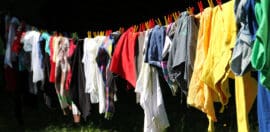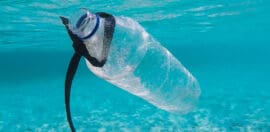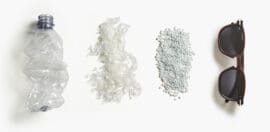Putting the Shoe On the Other Foot

6 December 2017 at 8:54 am
While at first glance a flip-flop may not seem the most useful footwear for Australia’s homeless population, the new Soul to Sole initiative is providing unexpected support for those in need, writes Wendy Williams in this month’s Spotlight on Social Enterprise.
When Dr Michael Kinchington decided he wanted to do something to help the homeless, he was “in the fortunate position” that he had invented a flip-flop.
Kinchington is a podiatric biomechanist and the co-founder of Ozify Australia, which produces health and wellbeing flip-flops to improve posture and enhance foot comfort.
But after seeing first hand that many of the people sleeping rough on Australia’s streets were lacking good footwear, Kinchington realised he could marry his wellbeing flip-flop with his desire to help some of the nation’s most disadvantaged.
The Soul to Sole initiative, a social conscience business model that helps a person in need with every Ozify thong sold, was born.
“It all came about from my despair at the failure of social policy in this country,” Kinchington tells Pro Bono News.
“My office is in the Martin Place precinct in Sydney, and outside the Reserve Bank of Australia, the famous, or infamous, tent city was slowly burgeoning, and just walking through that tent city each morning and seeing disadvantaged Australians literally depressed me, because I thought, these people are here because of circumstances quite often beyond their control and social policy for whatever reasons has not been able to support them.
“But just speaking to a couple of these people and sharing coffee with them it struck me that maybe I could actually help in a strange sort of way.”
Kinchington, who has worked in podiatric medicine for almost 25 years, working with elite athletes, was struck that many of those living in tent city were “unshod or not shod appropriately”.
He says the consequences of poor footwear on a community that relies upon walking as the primary mode of transport and the effects of the chronic health conditions among the homeless with diabetes, peripheral vascular disease and cellulitis all conditions exacerbated by lack of footwear, was not lost upon him.
“I thought ok maybe what we could do is get brand new shoes to people to protect them from the environment because walking is their only form of transport,” he says.
“When you look at disadvantaged Australians and the homeless community quite often, they’ve either got very, very poor footwear or no shoes at all.
“In my mind, a shoe is a fundamental right, and that may be a very biased position to take because I work in the industry.
“I was in the fortunate position where I invented a flip-flop.”
The flip-flop in question, came about after the 2012 London Olympics, when Kinchington teamed up with his colleague Mark Ninio.
“We put our heads together and we designed this health and wellbeing flip-flop and we used it within our practices and it started to take off,” he said.
“We received some interest from overseas and the product was being sold in Europe for two or three years, but I had the opportunity this year to bring it back into the country, I thought if I’m going to bring it back into the country, I want to use it for some social good.”
But Kinchington said the irony was that with the chronic health conditions experienced by the homeless, the flip-flop itself was not suitable footwear for people sleeping rough.
His view was they needed a “decent shoe” to protect from the environment, help with chronic health conditions that affect the feet and lower limbs and provide some dignity in the form of wearing new shoes rather than old second hand shoes or no footwear at all.
“This is the irony of it, I think, the fact that a homeless person can’t necessarily wear a flip-flop because it doesn’t protect them from the environment,” he says.
“But I thought those that can a. afford to buy a flip-flop, b. those who can afford to wear a flip-flop because they wear it for fun reasons rather than out of necessity, can use the flip-flop then to help homeless people and so I then went to my footwear contacts and said to them ‘okay guys you need to help me with this project, get behind me with this, help homeless people by selling flip-flops’ and this is where the Soul to Sole initiative commenced.”
The model, inspired by the social enterprise TOMS, works by putting the proceeds from the sale of a pair of flip-flops towards procuring new shoes through partner Asics Australia and distributing the shoes to the homeless community via Mission Australia.
“I think the model that we will settle on is that three flip-flops will equal one shoe and $15 will be donated to homeless organisations that combat homelessness,” Kinchington says.
“I took inspiration from Blake Mycoskie from TOMS, they had their one for one program, and I have followed Blake’s enterprise from afar for a few years now and it must have been in the back of my mind because when I was walking through Martin Place that morning in July I was thinking, I know how to help these people, it is to remodel the Blake Mycoskie model using flip-flops.
“I can’t promise one for one at the moment, eventually I hope I can. And what is quirky about it is that I can also engage other corporates to be involved by either donating the footwear to us, buying the footwear at cost pricing so we’re getting it by whatever means we have to.”
He said more partners were coming on board.
“Because I worked in the industry for a long time I know a lot of people in the footwear industry, I know that there is a lot of waste in the athletic shoe industry in particular, and so it was just a matter of going and talking to them and they thought ‘Michael this is a great initiative, let us help you’, I sold it to them as part of their corporate social responsibility and social conscience to be involved with this,” he says.
“What is interesting is that the first organisation I reached out was Asics but since then Brooks Australia have come on board, and some of the franchisees that own Athlete’s Foot stores want to get involved.
“There are shoes that you might have purchased but you’ve only worn them at home for a day or two, you’ve decided they’re not the right fit or whatever so you take them back, the company can’t sell them, they basically end up in landfill, so we’re going to start using those, we’ll start getting those shoes.
“With time we’ll get more and more partners on board, and more and more shoes. So today I have 400 shoes and these will be distributed to homeless communities.”
But he said while the initiative had seen some success since launching in August, it was not without its challenges.
“It is difficult,” Kinchington says.
“You need to be able to disseminate the message far and wide, and hopefully as quickly as possible, and I think that is the real challenge, being able to make the Australian community aware a. of homelessness but b. this is an organisation Ozify Australia and the Soul to Sole initiative that can help support combat homelessness.
“How we’re doing that at the moment is through social media and via Facebook, Twitter and Instagram, and organisations that have picked up on this… but there are 105,000 to 110,000 homeless Australians and that is a lot of shoes that we need to get out there and I want this to be a success.
“I think it is a disgrace that in the first world economy we’ve got that many Australians that are disadvantaged.”
Kinchington says his overall goal is to improve the lives of some of Australia’s most disadvantaged people.
“There are two aspects to it, the first aspect is to raise awareness of homelessness and the difficulties associated with that because our fellow Australians aren’t second class citizens, but at the moment they are being treated like second class citizens,” he says.
“The second part is if I can make a difference and rap the homeless community into programs that are going to make their lives a little bit easier then so be it.
“Ultimately I know I’ll have succeeded when I don’t have to hand out one more shoe because then we know there is no homelessness left.”
He said it was comforting to see the support the initiative was generating.
“I’m waking at the moment at 2.30 in the morning with my mind going 100 miles an hour, [thinking] how do I actually disseminate this message and get it out there. But in a way it is also comforting that people are responding and are giving support and lending a hand to this initiative,” he says.
“It is a matter now of trying to engage the Australian community the best we can into supporting us.
“Let’s face it, a flip-flop, a thong, whatever you want to call it, is very iconic in Australia, we all wear them, we all use them. I thought this is a really novel approach, to use a flip-flop as a vehicle to get new shoes to homeless people, use a flip-flop to raise money for homeless organisations, to help disadvantaged people.”







